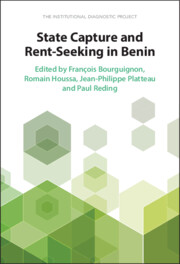Appendix 3 Effects of Shocks in Nigeria on Benin’s GDP
To quantify the short-run effects of aggregate demand shocks in Nigeria on Benin’s GDP, we focus on household consumption in Nigeria as a driving factor for Benin’s growth, using national account aggregates. Nigeria’s household consumption is better suited than Nigeria’s GDP as a driving factor, as a large part of the CBT of Benin with Nigeria originates in Nigerian domestic consumption spending. We run a regression between Benin’s GDP growth and the growth of household consumption in Nigeria over the 1980–2017 period.
The regression includes one lag of each variable and uses the longest period for which data on household consumption are available in both countries in the WDI database. The estimated coefficient of contemporaneous Nigerian household consumption is 0.08 and is significant at the 1 per cent level. Although significant, the coefficient appears to be small in economic terms. However, one needs to take into account that the volatility of household consumption growth in Nigeria is much higher than that of Benin’s GDP: their respective standard errors for the 1980–2017 period are 16.0 per cent and 2.9 per cent, respectively. A negative shock of one standard error in Nigerian household consumption – statistically not that improbable for the Nigerian economy – would decrease Benin’s GDP by 1.3 per cent, an estimate with a 95 per cent confidence band of 0.4 per cent and 2.2 per cent. The regression results also indicate that the impact occurs contemporaneously, the one-year lagged effect of the Nigerian shock being quite small and insignificant.
These results confirm that a significant shock to the growth rate of household consumption in Nigeria, similar to those not infrequently witnessed there, can have a sizeable effect on Benin’s contemporaneous GDP growth rate. This economically significant effect is confirmed by a variance decomposition analysis performed with a bivariate structural vector auto-regression (SVAR) model with the same two variables and over the same period. This attributes about 22 per cent of the variance of the model’s forecast error for Benin’s GDP growth to shocks in Nigerian household consumption.

